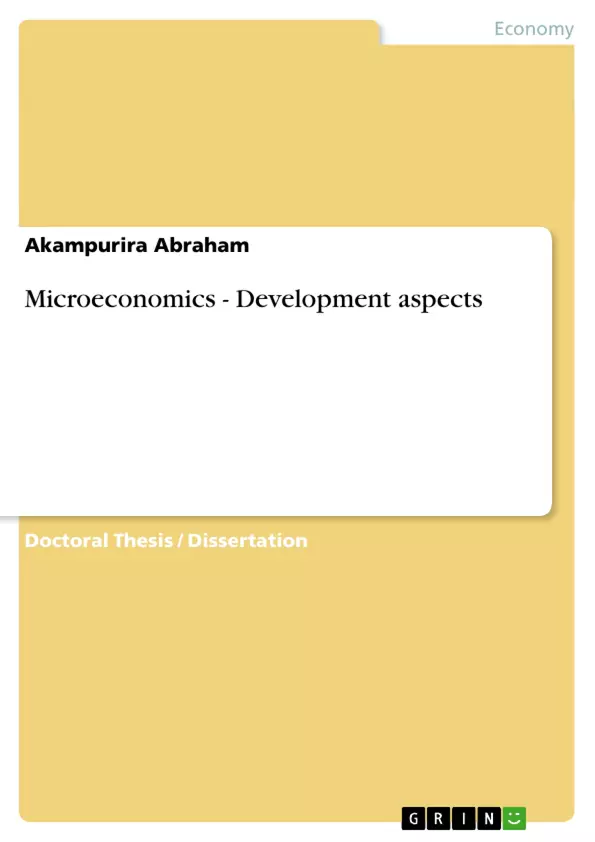Human beings have wants and they are naturally not self sufficient. They therefore have
to produce and exchange what they do not have with those who have what they want.
Right decisions have to be made in regard to the quantities to produce and the prices to
charge by firms. This is done through the demand and supply theory. Supply and
demand in most economies face a lot of challenges. Supply challenges range from
small firms with structural supply rigidities to huge firms that act as monopolists and
cartels that charge exploitative prices on the consumers. These challenges affect the
trading position of several economies in the international trade. Demand is rapidly
increasing due to the rapid world increase in population. This paper will cover analysis
of decisions of a firm, supply and demand of a commodity, price of a commodity and
how the small economic groups and individuals affect the mentioned variables
1.1. Objectives of the study.
The course will;
- Introduce students to important principles of microeconomics so that they are
able to take important decisions in life.
- Enable students acquire principles that enable them to analyze day today
problems.
Inhaltsverzeichnis (Table of Contents)
- Chapter One
- 1.0. Introduction
- 1.1. Objectives of the Study
- Chapter Two
- 2.0. Definitions
- 2.1. Microeconomics
- 2.2. Production
- 2.2.1. Scarcity of factors of production (Resources)
- Chapter Three
- Exchange System
- 3.1. Relative and nominal prices
- 3.2. Demand theory
- 3.3. Supply theory
- 3.4. Equilibrium position in the market
- 3.5. Price ceiling and price floor
- 3.6. International effects
- Chapter Four
- Market coordination
- 4.1. Markets and the three fundamental questions
- 4.2. Economic and technical efficiency
- 4.3. Consumer equilibrium
- 4.4. The role of Price Mechanism
- Chapter Five
- Market failure
- 5.1. Imperfect and inadequate information
- 5.2. Externalities
- 5.3. Inequality in society
- Chapter Six
- The Decision of the firm
- 6.1. Profit maximization
- 6.2. Total Revenue, Marginal Revenue and Marginal cost of a firm
- 6.3. Profit maximization under perfect competition
- 6.4. Profit maximization under Monopoly market
- 6.4.1. Sources of Monopoly
- 6.4.2. Price discrimination
- 6.5. Other market structures
- 6.6. Employment and output
- 6.7. Regulation
- 6.8. Resource markets
- 6.9. Natural resource markets and environmental policy
- 6.10. Allocation of resources and environmental problems
- 6.11. Economics of the family
- 6.11.1. Subsistence Production
- 6.11.2. The market (Monetary production)
- 6.11.3. Agricultural price fluctuations
- 6.12. Forms of Business Organizations
- Chapter Seven
- Recommendations
Zielsetzung und Themenschwerpunkte (Objectives and Key Themes)
This paper aims to analyze the decision-making processes of firms, particularly in relation to supply and demand, commodity pricing, and how individual economic actors influence these variables. The work explores the complexities of microeconomic theory and its application in real-world scenarios.- Supply and Demand Dynamics: The text delves into the relationship between supply and demand, focusing on challenges and imbalances within the market.
- Price Determination: The paper examines factors influencing the price of commodities, including market forces, monopolies, and international trade.
- Firm Decision-Making: The text explores the internal decision-making processes of firms, with a focus on profit maximization, market structures, and resource allocation.
- Market Efficiency and Failures: The work investigates the concept of market efficiency and explores instances of market failures, such as imperfect information, externalities, and inequality.
- Environmental Considerations: The paper considers the intersection of microeconomics with environmental issues, including natural resource markets, environmental policy, and the economic impact of environmental problems.
Zusammenfassung der Kapitel (Chapter Summaries)
- Chapter One introduces the concept of microeconomics and its relevance in understanding the decisions made by individuals and firms. It highlights the importance of studying microeconomics to make informed choices about production, consumption, and resource allocation.
- Chapter Two provides definitions of key microeconomic concepts such as microeconomics itself, production, and the scarcity of resources. It establishes a foundation for understanding the basic principles of the field.
- Chapter Three delves into the exchange system, exploring the interplay of supply and demand in shaping market prices. It examines factors influencing demand and supply, as well as the impact of market forces on equilibrium prices.
- Chapter Four examines the concept of market coordination and the role of prices in allocating resources efficiently. It discusses the three fundamental questions of resource allocation and how markets function to address them.
- Chapter Five explores the concept of market failures, analyzing situations where markets fail to allocate resources efficiently. The chapter discusses factors contributing to market failure, including imperfect information, externalities, and inequality.
- Chapter Six examines the decision-making processes of firms, focusing on profit maximization and the various market structures under which firms operate. It analyzes the strategies firms use to maximize their profits and the impact of market structures on firm behavior.
Schlüsselwörter (Keywords)
The central themes of this paper revolve around the application of microeconomic principles to understand the behavior of individuals, firms, and markets. Key terms include: supply and demand, market equilibrium, price determination, profit maximization, market structures, market failures, resource allocation, and environmental economics. The work explores these concepts in the context of real-world scenarios, demonstrating the practical implications of microeconomic theory.- Quote paper
- DOCTOR Akampurira Abraham (Author), 2013, Microeconomics - Development aspects, Munich, GRIN Verlag, https://www.grin.com/document/209947



